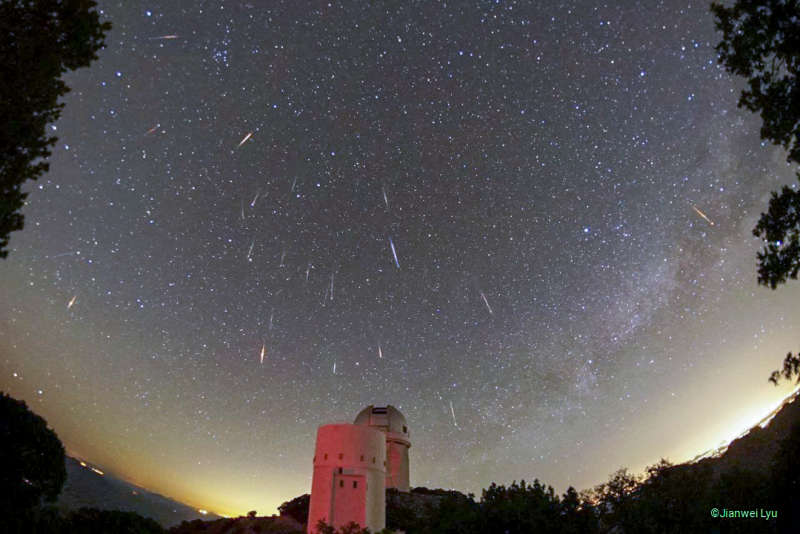Credit & Copyright: Jianwei Lyu
(Steward Obs., U. Arizona)
Explanation:
It wasn't the storm of the century -- but it was a night to remember.
Last night was the peak of the
Tau Herculids meteor shower,
a usually modest dribble of
occasional meteors originating from the
disintegrating Comet
73P/Schwassmann-Wachmann 3.
This year,
calculations showed that the Earth might be passing through a particularly dense
stream of
comet debris -- at best creating a
storm of bright meteors streaking out from the constellation of Hercules.
What actually happened fell short of a meteor storm, but could be called a
decent meteor shower.
Featured here is a composite image taken at
Kitt Peak
National Observatory in
Arizona,
USA
accumulated over 2.5 hours very late on May 30.
Over that time, 19 Tau Herculids
meteors
were captured, along with 4 unrelated meteors. (Can you find them?)
In the near foreground is the
Bok 2.3-meter Telescope with the
4.0-meter Mayall Telescope just behind it.
Next year, the annual Tau Herculids are expected to return to its
normal
low rate, with the
next active night forecast for 2049.
1999 2000 2001 2002 2003 2004 2005 2006 2007 2008 2009 2010 2011 2012 2013 2014 2015 2016 2017 2018 2019 2020 2021 2022 2023 2024 2025 |
Yanvar' Fevral' Mart Aprel' Mai Iyun' Iyul' Avgust Sentyabr' Oktyabr' Noyabr' Dekabr' |
NASA Web Site Statements, Warnings, and Disclaimers
NASA Official: Jay Norris. Specific rights apply.
A service of: LHEA at NASA / GSFC
& Michigan Tech. U.
|
Publikacii s klyuchevymi slovami:
meteor shower - Meteornyi potok
Publikacii so slovami: meteor shower - Meteornyi potok | |
Sm. takzhe:
Vse publikacii na tu zhe temu >> | |
